Those cheerful pot plants can hide lethal risks.
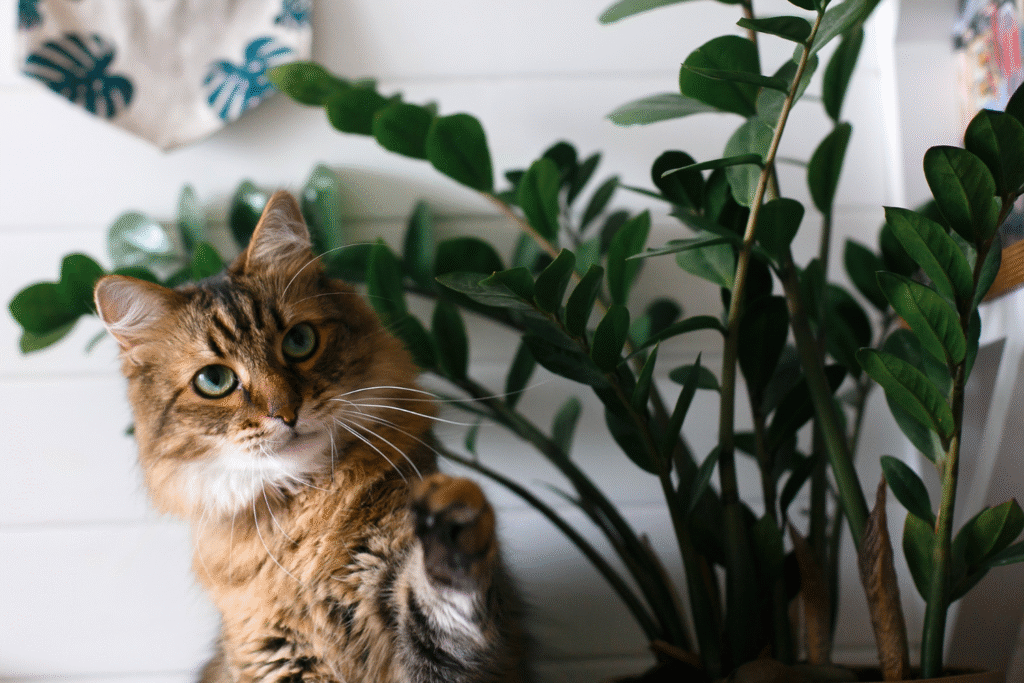
One innocent leaf can change everything for a curious cat. You probably have a few of these plants because they brighten rooms and make your home smell more alive, and your cat probably brushes past them without a second thought. But feline bodies handle chemicals very differently from ours, and what seems like harmless greenery can cause severe reactions. This guide walks through nine common houseplants that are proven dangerous to cats, how they tend to show up in real life, and which ones you should remove, avoid, or swap for safer alternatives before you give them to your cat.
1. Lilies should never live inside a cat household.
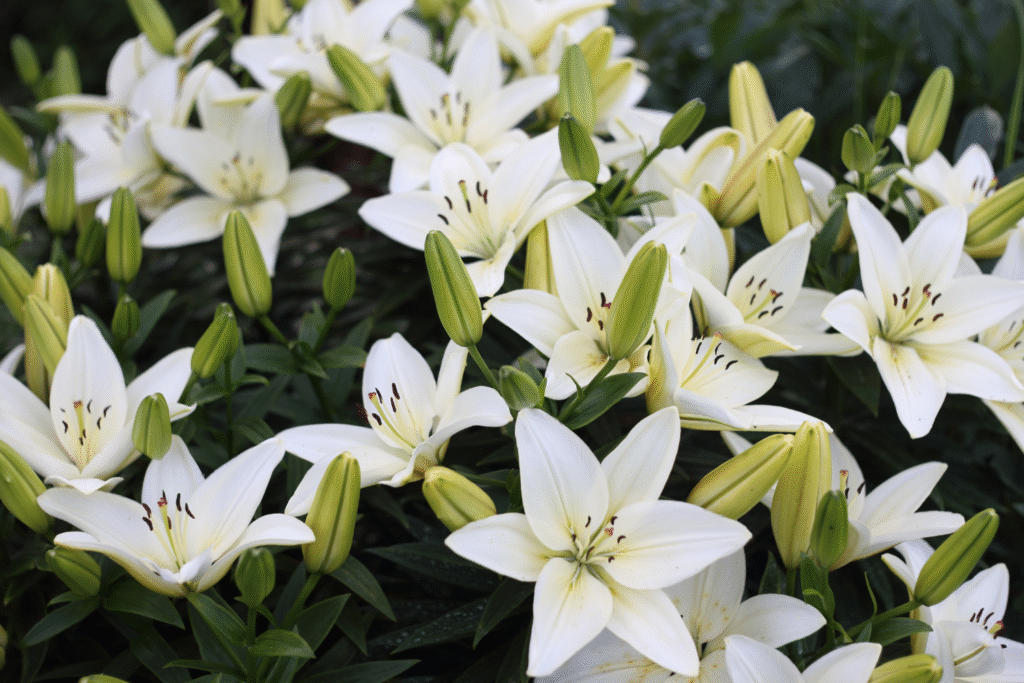
As stated by the ASPCA, true lilies are among the most deadly plants for cats, and that is not an exaggeration. Even tiny amounts of pollen or a lick of vase water are enough to trigger acute kidney injury. Early signs can be subtle so owners often miss them until the cat is clearly ill.
Most people bring lilies in for color and scent and never plan for danger, which is how accidents happen. If you have any variety labeled as a true lily remove it from the home and tell guests not to bring bouquets that might contain one.
2. Sago palms are plants you should avoid entirely.
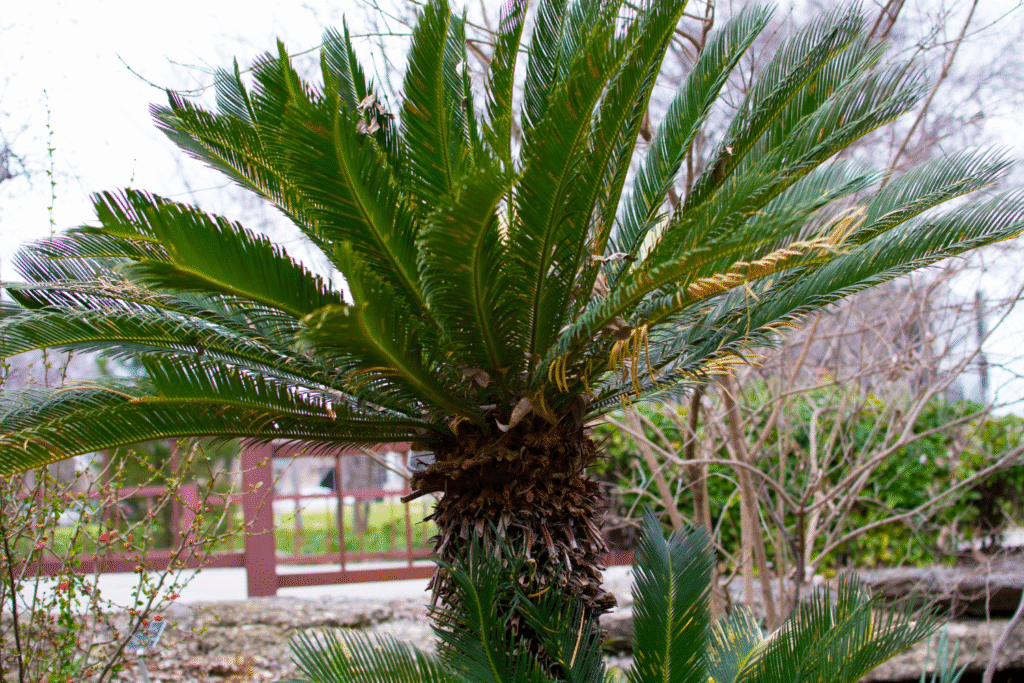
Sago palms look exotic and tough but the seeds and new growth are extremely toxic. If a cat chews even a little, symptoms escalate fast and emergency veterinary care is required, as reported by the Pet Poison Helpline. Treatment is urgent and sometimes still not enough.
Because they seem so ornamental, people often underestimate the risk until a curious cat samples a leaflet or seed. The sensible move is to replace the plant or keep it somewhere completely inaccessible, because prevention is the only comfortable answer here.
3. Aloe vera belongs on shelves away from cats.

Aloe feels like a home remedy for people, but the plant contains compounds that cats do not tolerate. A cat that eats the gel or outer leaf can become nauseous and shaky, and internal signs may not look right for hours, according to VCA Animal Hospitals. Veterinary guidance is needed even for small bites.
It is painfully ironic that an item bought to soothe us can be dangerous to a pet. Put your aloe up high or choose a pet safe alternative so your cat cannot turn a helpful plant into an emergency.
4. Pothos looks harmless but is best avoided.
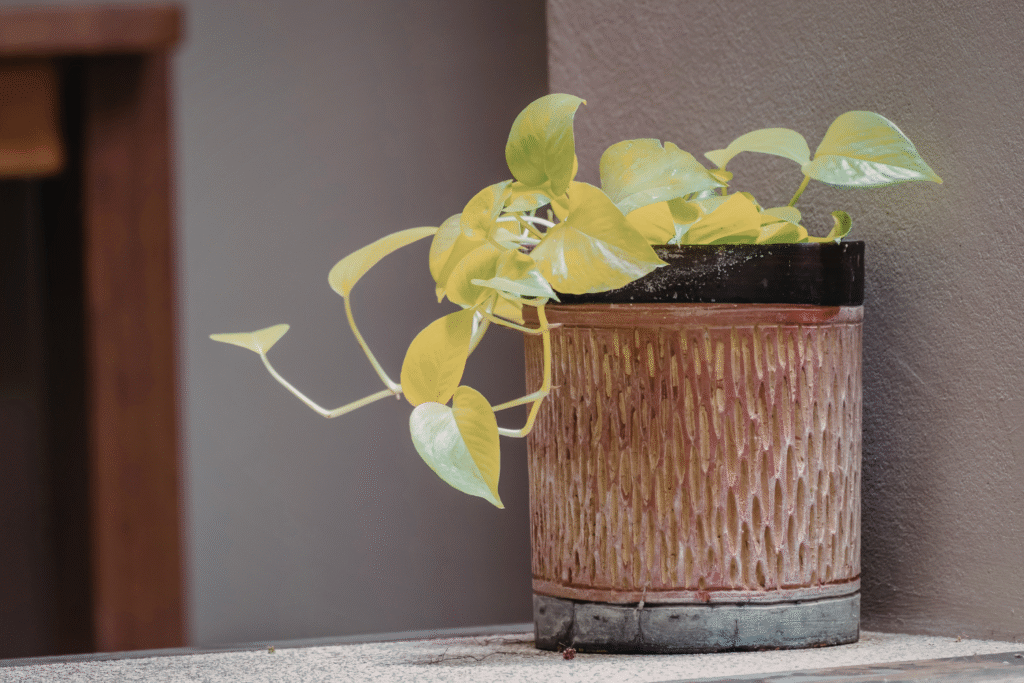
Pothos is everywhere because it survives neglect and looks great trailing from a shelf. The problem is that its leaves have compounds that irritate mouths and digestive systems if chewed, which leads to drooling and discomfort. Cats tend to explore textures with their mouths and pothos usually ends with an unpleasant vet visit.
If you like trailing green, opt for non toxic varieties or artificial vines. Swapping pothos for a safe, pet friendly option keeps your aesthetic without the anxious midnight panic of finding your cat chewing a leaf.
5. Dieffenbachia should not be an indoor playmate.
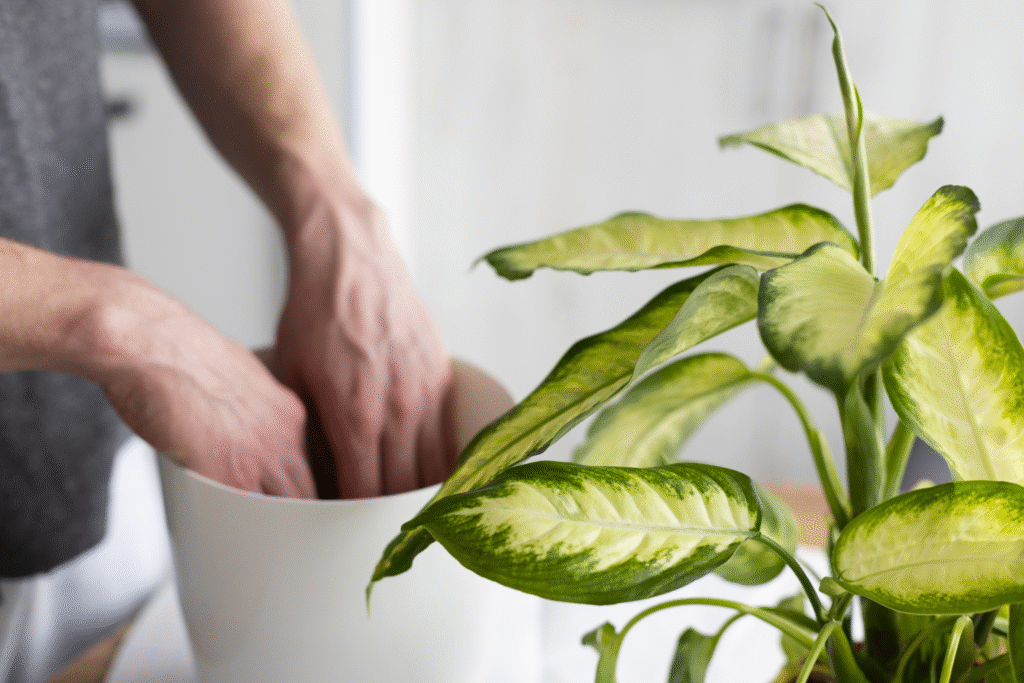
Dieffenbachia offers bold patterned leaves and low light tolerance, but it causes intense oral irritation and swelling when a pet chews it. A cat that mouths a stem can develop painful swelling that makes breathing or swallowing difficult, and that is when people realize the plant is not harmless.
Owners who love statement foliage can pick alternatives that give drama without risk. Moving dieffenbachia out of reach is not a long term plan because cats are curious, so replacement is the calmer choice.
6. Peace lilies are more dangerous than their name.
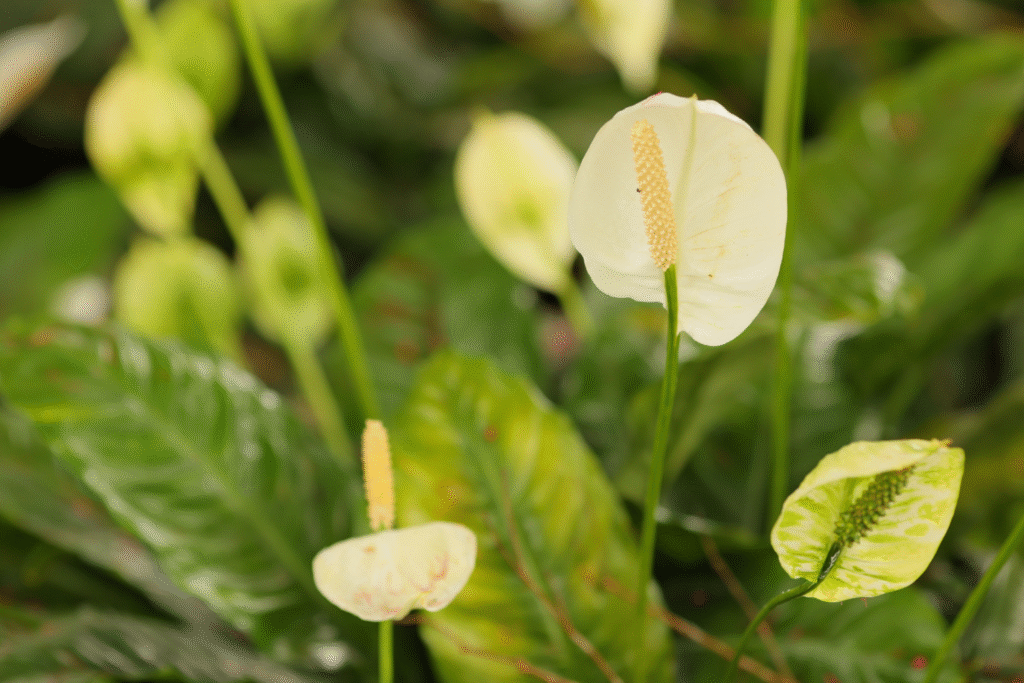
Peace lilies are common in homes and workplaces because they tolerate low light and look elegant. The trade off is that compounds in their leaves and stems can trigger mouth and stomach upset if ingested. A nibble can lead to drooling, vomiting, and general distress that often sends owners to call their vet.
They are easy to find and hard to resist as décor, which means they are frequent culprits in pet poisonings. Choosing a non toxic flowering plant gives you the blooms without the worry when the cat decides to investigate.
7. Oleander should never be left within reach.
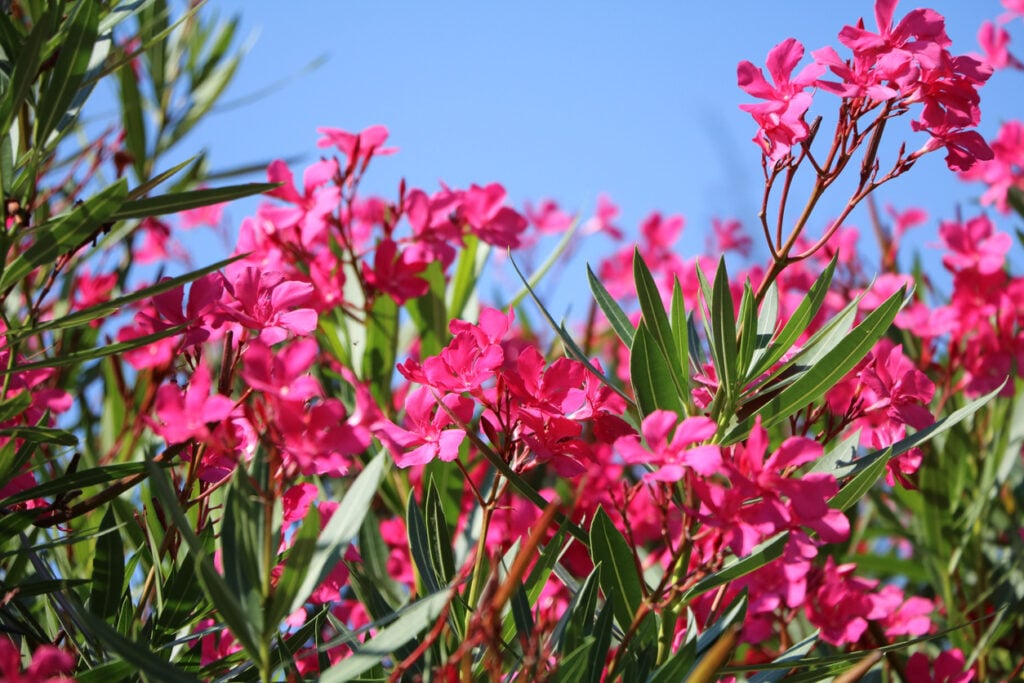
Oleander carries potent cardiac toxins and is toxic to many species including cats. Ingesting even small parts can cause severe signs that affect heart rhythm and overall stability. This plant belongs outdoors only in places without roaming pets, and never inside where curious paws can find it.
Because oleander is used in hedges and landscaping in warm climates, awareness matters when doors are open or cuttings come inside. If you spot it in clippings or neighbors gardens, keep your cat away and do not accept stems as decorations.
8. Cyclamen is pretty and quietly risky for pets.
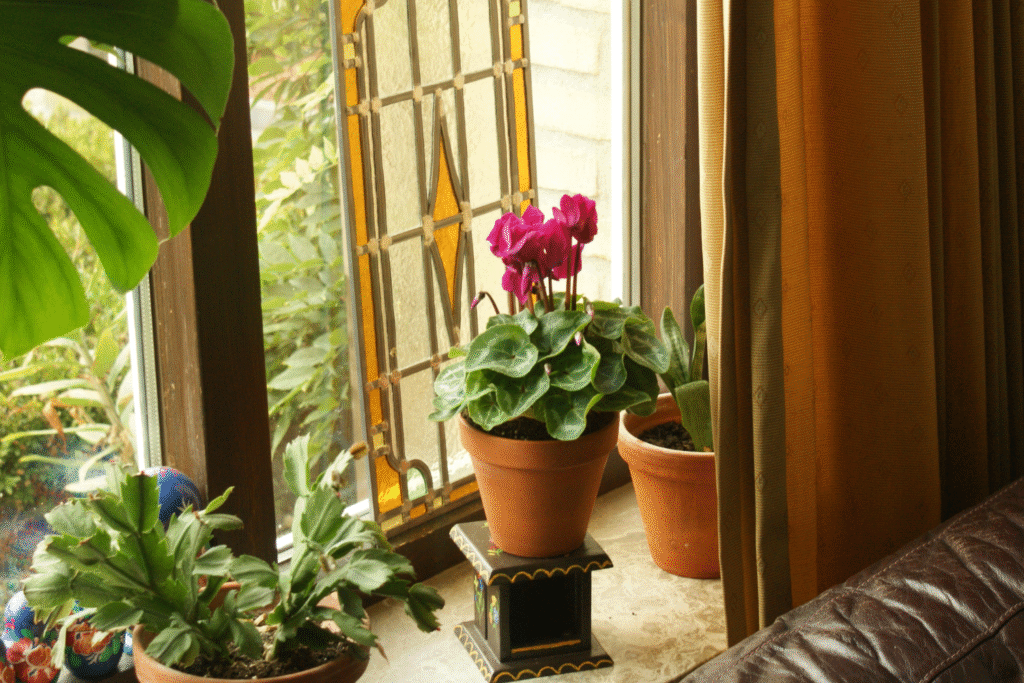
Cyclamen bulbs contain compounds that are especially toxic if a cat digs at the soil and nibbles the bulb. Initial signs can look like simple stomach upset but can progress if the bulb was sampled. The plant’s seasonal charm makes it a popular gift, and that is how many accidents start.
Keep seasonal cyclamen out of the house if you own a cat, or switch to a cat friendly seasonal display. A quick swap prevents a lot of late night phone calls to emergency clinics and keeps holiday greenery from becoming a health hazard.
9. Tomato plants at home can surprise you.
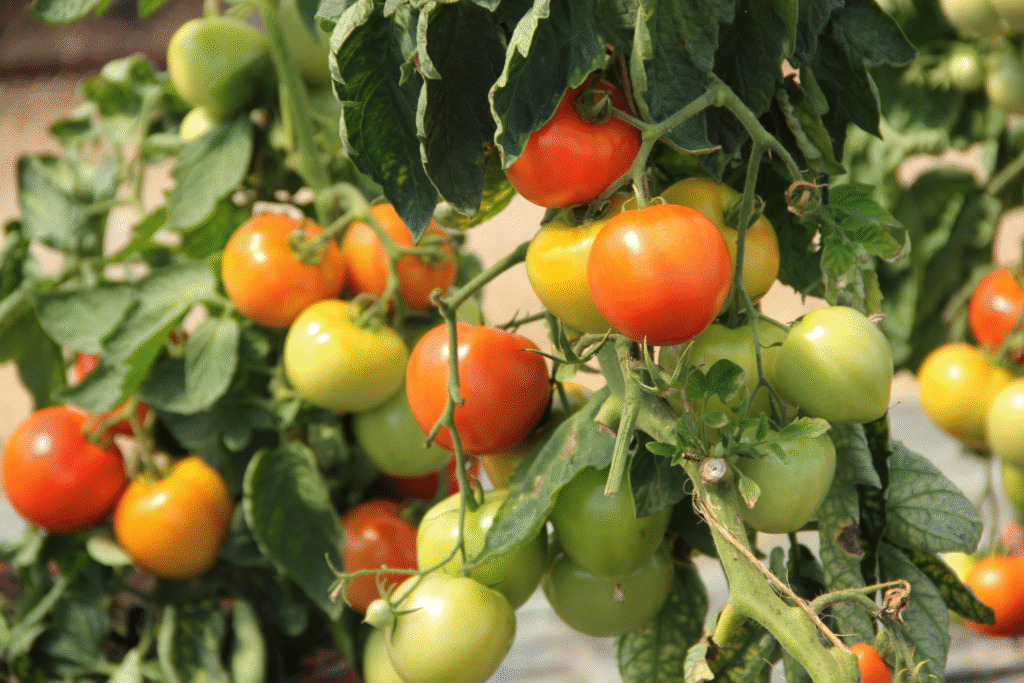
Home tomato plants seem wholesome until a cat samples the leaves or green fruit, which contain compounds that can upset a cat’s stomach and nervous system. Many people grow tomatoes in containers that are reachable, which is how pets get access. The ripened fruit is less risky, but green parts are the concern.
If you garden on the patio, place pots where a cat cannot hop up and browse, or fence them off. That way you enjoy homegrown produce without turning your planter into a potential danger zone for a curious cat.
If any ingestion is suspected, call your veterinarian or an animal poison control line right away. Small choices about plant placement and swaps for pet friendly varieties are simple steps that prevent big heartbreak later.
